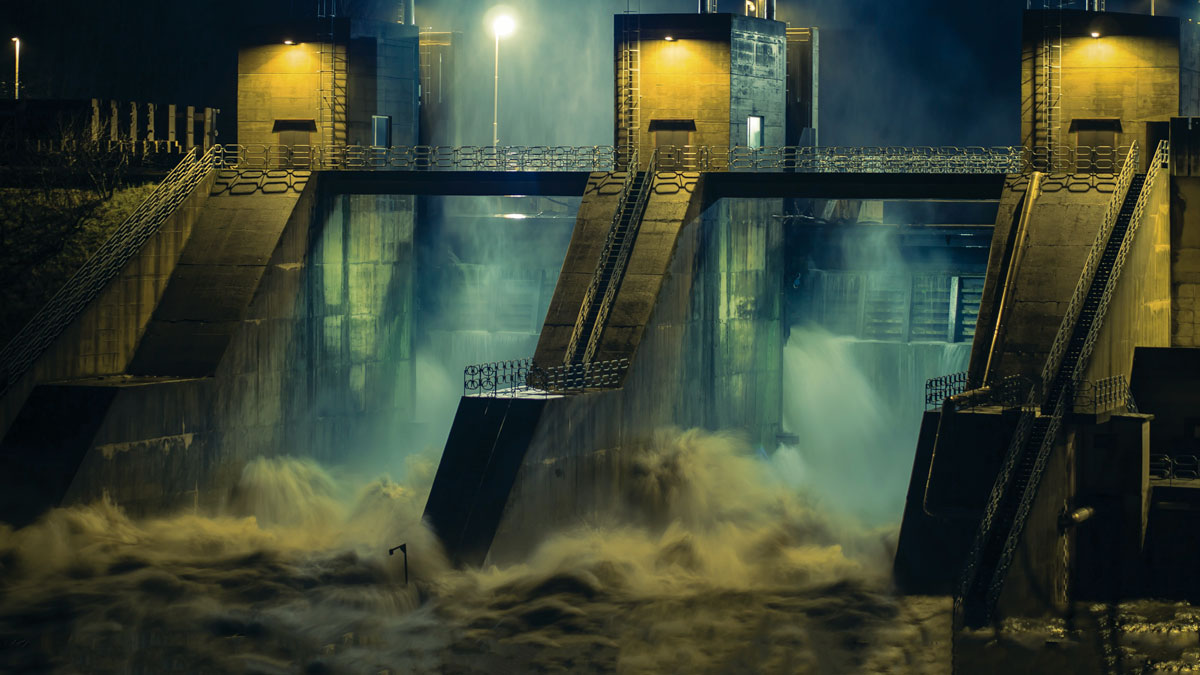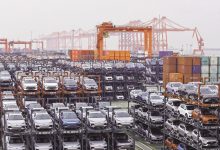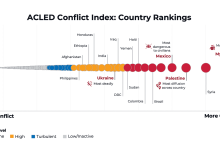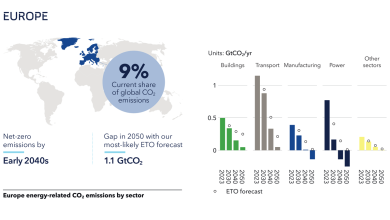An Essentially Rare and Vital Resource: Water
The risk of running out of water already exists in many countries of the world. About one million people die, annually, due to the use of infested water or lack thereof and 844 million people do not have access to drinking water, although 70% of the Earth’s surface is covered by water.
The world pays more and more attention to the water deficit issue. For a large number of countries, this threatens the economic and social development. By 2030, more than one third of the world’s population will have river basins with significant water declines, especially countries and regions with high economic growth.
In all areas of the world, political leaders, businessmen and the civil society realize the challenge posed by the depletion of water resources and the need to manage them more sparingly. For now, progress remains limited and too slow. This is caused largely by the lack of a rigorous analytical model to support decision-making and the selection of investments in the water sector.
Romania holds 60% of the total water reserve in Europe
With 2.500 springs and 60% of the mineral waters in Europe, Romania is one of the states with the richest underground water resources. Even so, it is not entirely safe from the danger of water crisis. What are the effects of water shortage globally, what is its impact on Romania and what are the risks for this element indispensable to life to be completely exhausted one day?
Even if it seems less likely that water runs out, in conditions in which 70% of the Earth surface is made of water, the percentage of fresh water is only 2.5%, a large part of this quantity being stored in ice and snow. In reality, population has immediate access to only 1% of the freshwater resources.
A sci-fi scenario?
For a water-rich country, like Romania, a scenario in which water becomes equally expensive as precious metals, as we see in sci-fi movies, seems unlikely.
There are frequent information and images about how polluted with household waste the waters in the country are. And that is because the majority of the population in the rural environment simply throws away garbage in the close-by water.
“The melting of the snow and the rains this spring have engaged the waste dumped by residents and tourists on the banks of the Bistrita River and its tributaries. Hidroelectrica makes efforts to green the lake and reduce the amount of floating waste whose impact is significant for both the environment and the yield of hydropower units,” is the point of view of Hidroelectrica.
The company estimates a cost of around RON 150,000 only to green the Izvorul Muntelui Lake. In the past, the recovered waste was not accepted by the authorized collectors as recyclable, so Hidroelectrica would also bear the costs for their temporary storage and disposal.
Global water shortage is, in the opinion of George Ristea, General Manager of Apa Calipso and President of the Water Industry Producers Association (APRIA), a real and urgent problem. He says that “water deficit will become a subject more important than climate change, as it poses a greater danger than global warming, being a cause-effect type of relationship”.
The European Commission develops more and more projects, and its major goal is to identify practical solutions to the water deficit issue and the phenomenon of drought in Europe.
Romanian specialists believe that Romania continues to be the country with the largest underground reserves in Europe and that the hydrographic network of rivers and lakes is not to be neglected either. With good and diligent management, such a generalized problem is not looming.
However, they do not entirely rule out the possibility for water to become a luxury, under the conditions of dramatic climate change, given that the pollution level is rising or under the conditions of an irresponsible exploitation of resources.
And, yes, such scenario is possible. The solution, irrespective of the term, is to be cautious in consumption. Experts add that we could consider Romania’s desertification, as a possible scenario, due to climate change, chaotic human interventions, with massive deforestation, pollution, and aggressive industrial development.
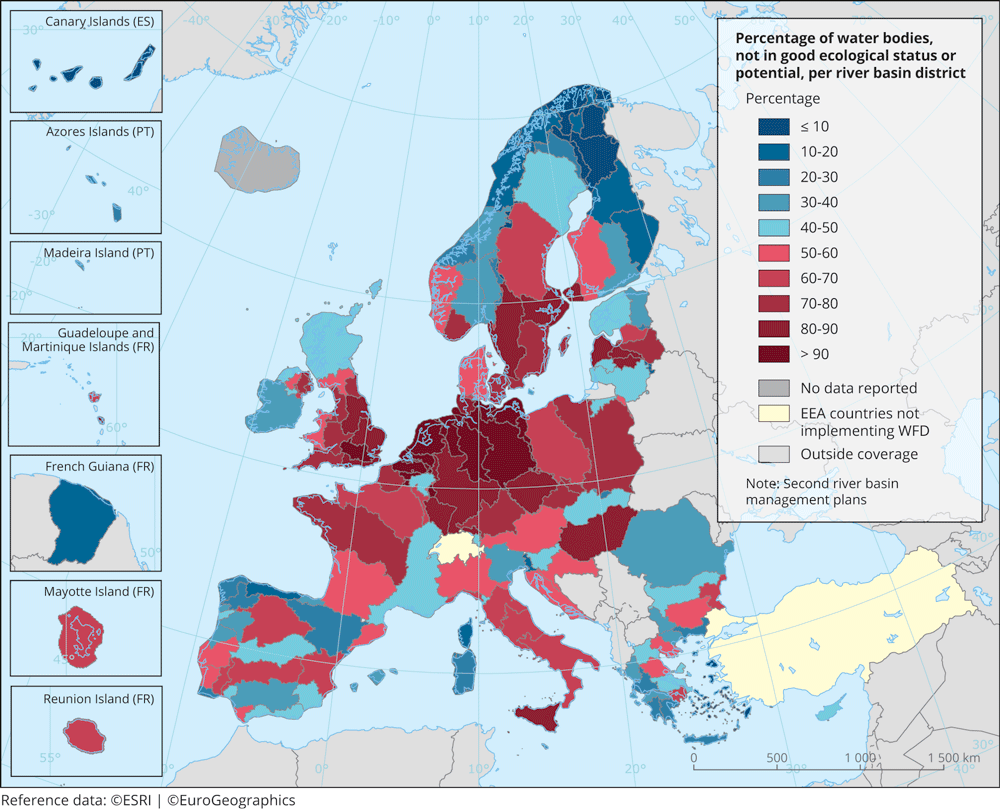
Global annual water needs by 2030
In principle, when a precious resource is available in limited amount, its deficit is sufficient to generate new investments and mechanisms allowing the increase in productivity and temper demand.
However, it seems that water is an exception to the rule. Despite the multiplication of calls for mobilization, there are many signs of deterioration of water situation at global level.
In absence of external intervention, it seems less likely that the water sector will find an efficient, sustainable, and cheap solution to meet the needs caused by the economic and demographic growth.
Guaranteeing ‘gross’ water resources is the condition for hoping to solve the distribution of drinking water in urban agglomerations and in the rural environment or the collection and treatment of wastewater. However, the institutions and practices implemented in the water sector have often failed in this mission.
The lack of transparency around the economic equation of water resources explains the difficulty of answering to a number of fundamental questions.
What technical means do we have to increase supply and increase water productivity and therefore address the water deficit? What resources are needed to implement these technical means? Are end-consumers of water provided with effective incentives to change their behavior and invest in more economic equipment? To what extent should the delay in investments be offset by initiatives from the private sector and how can the public sector make sure that water shortage does not negatively affect the economy?
In the water sector, the economic data prove to be incomplete, the management of resources is often opaque, and the various stakeholders do not cooperate enough.
Water resources are distributed inefficiently and suffer from chronic investment deficit, for the simple reason that investors do not have the necessary information to make healthy economic decisions.
Even in the countries the most advanced in water policy, there is still a long way to go before the sector is managed with the level of sophistication needed for such an essential resource.
It is clear that a drastic improvement in water resources management is needed, otherwise it will be very difficult to meet the challenges that depend on it, such as feeding the world’s population or sustainably supplying the population with energy.
Assuming a scenario of average economic growth, the annual global water demand will increase from 4,500 to 6,900 billion m3 by 2030. Thus, the increase represents 40% more than the reliable supply currently available (including the volumes of water returned to the natural environment after use and the reservation of part thereof for the needs of the ecosystem).
This global deficit figure is in fact a series of local imbalances, some of which reflect an even worse situation: a third of the world’s population, concentrated in developing countries, will live in basins where the deficit will exceed 50%.
The factors behind excess water demand are mainly related to economic growth and development. Agriculture consumes around 3.1 trillion m3 of water per year, or 71% of current global withdrawals, and in the absence of efficiency gains will absorb 4.5 trillion m3 by 2030.
Therefore, there is a direct link between the issue of water and the issue of global food supply. The increase is largely attributed to China, where industrial water demand is expected to increase to 265 billion m3, mainly due to electricity production. Finally, the share of household water demand will decline overall, from 14% today to 12% in 2030, although it will increase in some local basins.
If the projection of current trends shows the impossibility of filling the water deficit, then it is a safe bet that the withdrawals from fossil reserves will increase, and the water reserved for environmental needs will be confiscated.
Reducing the residual gap in 2030 with conventional supply measures would be very costly. Indeed, the cost of available technical solutions often exceeds USD 0.10/m3, a level higher than most solutions used today, and can reach USD 0.50/m3, or even more.
Without a new approach and a rebalancing between measures to increase supply and limit demand, annual investment in upstream water infrastructure is expected to reach more than EUR 200 billion, a fourfold increase in current spending.
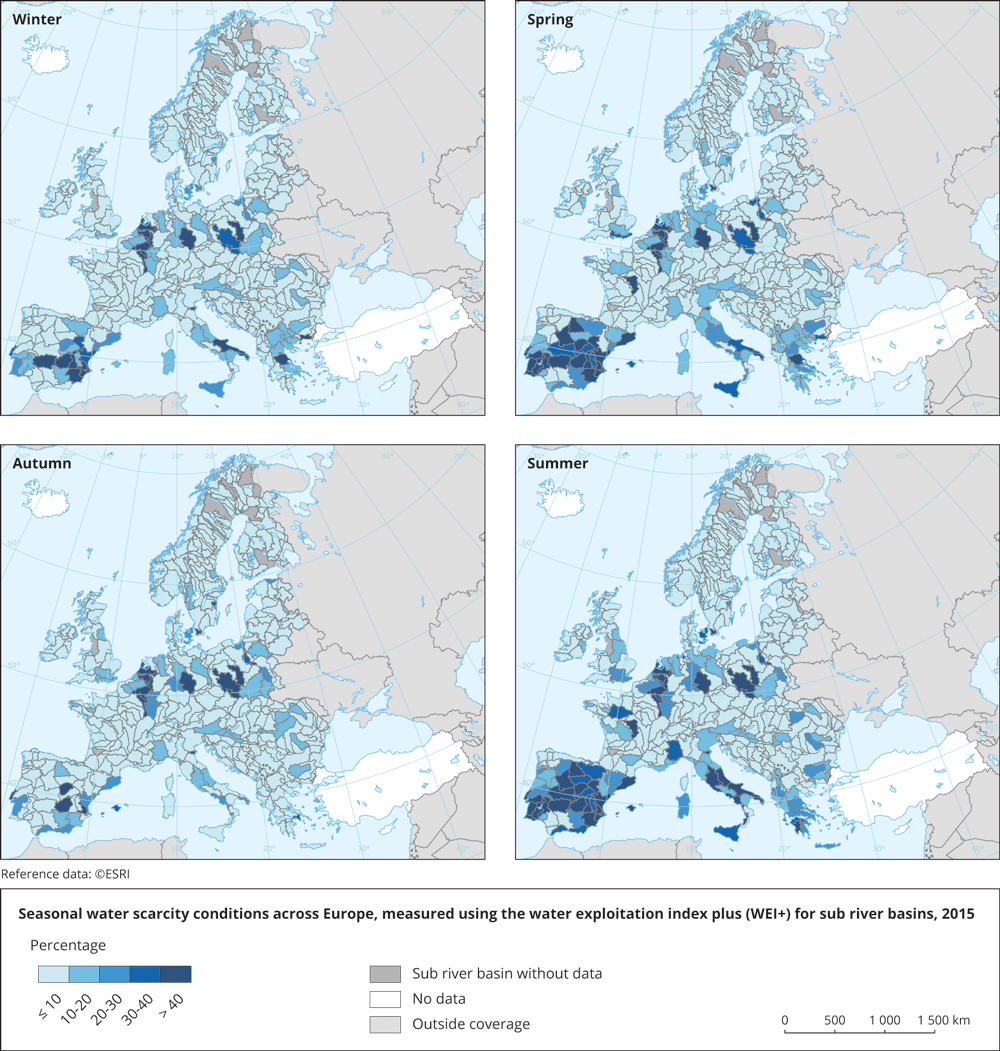
The main global challenges in terms of water
- Competition for limited water for different uses within the same river basin
- The predominant role of agriculture for food, textiles, and bioenergy, as a key factor in water demand
- The connection between water and energy problems
- The role of urbanization in water resources management
- Sustainable growth in arid and semi-arid regions
Possible solutions
An integrated economic approach to water resources management seems possible without the cost of solutions being necessarily enormous. At the scale of a given basin or country, three types of levers can be activated simultaneously to close the gap between supply and demand.
Two of them are options for technical improvements aimed at either increasing supply or increasing water productivity, i.e., in the sphere of economic activities.
The third type of lever refers to the basic economic choices of countries and involves reducing taxes by changing the scope of these economic activities.
A properly managed water sector should have a combination of these three types of solutions that is both environmentally sustainable and cost-effective. Globally, the investment needed to close the gap between water supply and demand is in the range of USD 50 billion to USD 60 billion.
Agricultural productivity is an essential part of the solution. In all case studies, measures for the productivity of water for agricultural use help to fill the water deficit by increasing ‘drip’ production.
Drip irrigation and sprinkler irrigation are examples of such techniques. Other measures to increase crop yields include improved anti-erosion and drainage farming practices, the systematic use of the best available germplasm or more sophisticated seeds, the optimal use of fertilizers and, in particular, traditional practices (pest control) and innovative protection techniques.
Planetary socio-economic development is a process that cannot be stopped even if there are harmful repercussions on the natural environment. Ignoring these repercussions is a crime to the ecosystem and human society. In conditions in which the areas with drinking water deficit are currently in full expansion, the solutions to preserve the planet’s water resources are imperatively necessary.
Preserving the planet’s water resources is possible by limiting water consumption, reducing pollution, investing in solutions to obtain renewable energy, managing water consumption in order to make it more efficient.
Taking into account the technological development of the recent years, an extremely effective solution for the preservation of water resources and monitoring consumption is the development of software with precise and complex databases allowing the exact knowledge of the water quantity consumed in a certain region, of how it was consumed, of the status of water reserves in that area etc. Such software is extremely useful in the fight for reducing global water waste.
Decision-making tools for political leaders
The concerns of political leaders are threefold.
They first want to find some indications on the difficulty of implementing technical solutions. They must also measure the impact that some water policies may have on the adoption of measures. Finally, they will seek to identify the types of policies that are likely to change the economic equation for the adoption of measures.
Addressing the cost curve on these three dimensions will therefore allow the decision-makers to better understand the implementation of available solutions.
First of all, the measures on the cost curve can be classified depending on the factors that can prevent their implementation, such as the lack of institutional competences, political and cultural obstacles or the multiplicity of the stakeholders involved. The technically feasible solutions risk being hampered by these difficulties.
Policymakers have the possibility to develop scenarios to assess the impact of their decisions on water demand. They will be able to determine to what extent the adoption of certain measures, or therefore the increased economic growth, could affect the imbalance between the water supply and demand in a country.
The cost curve can describe a number of policy scenarios. For example, a number of analyzes seem to indicate that, if subsidized energy prices – which currently allow farmers to pump groundwater at a reduced cost – were to be reduced, the production of crops would decrease, which would limit the irrigation needs.
A decrease by 5% in the production of irrigated crops would reduce water demand by 8% and the cost of closing the gap between water demand and supply by 10%. This outcome should, of course, be placed in perspective with declining harvests and the resulting decline in economic activity.
From the end-consumer perspective, the cost of the measures necessary to close the gap between the demand and supply of a country can be significantly different than the one perceived by the government.
Technology suppliers
Innovation in water technologies – whether it is related to supply (e.g., desalination), industrial efficiency (e.g., water recycling) or agricultural techniques (e.g., crop protection or irrigation control systems) could play a key role in rebalancing the water supply.
The cost curve allows technology manufacturers to compare their products and services to estimate their market potential and competitiveness compared to other solutions.
Construction sector
The renewed interest in efficiency and productivity does not mean that measures to increase supply will not play a major role.
Therefore, the construction sector will always have an important market for large-scale infrastructure. Due to the cost curve, it is possible to determine the regions in which the development of this infrastructure will be the most necessary and those in which other solutions may predominate.
Better water management
In the following decades, water will become a major investment area, for public institutions, intergovernmental organizations, and the private sector.
For most of the countries, allowing things go their normal course is simply no longer an option. Although there are solutions to water scarcity for most countries and regions of the world, institutional barriers, lack of awareness and inappropriate incentives can hinder their implementation in both the private and public sectors. Removing these obstacles will require perseverance in action and, in many cases, an integrated policy to transform the water sector.
Heavy water users usually play a key role in managing demand. Government policies can guide industrial behavior towards greater efficiency, one of the key elements of a water management reform program.
It is essential that incentive schemes increase water productivity. For example, through more precise ownership rights over water use, as well as through appropriate quotas, tariffs, and standards. There have never been so many arguments to justify a major transformation of national water management policies. In doing so, the challenges that many countries will face will be considerable.
A luxury for many people on the planet
2.2 billion people on the planet have no access to water in their homes.
Given that hand hygiene is one of the most effective ways to stop the spread of COVID-19 and other pathogens, these data are alarming. Indeed, washing our hands not only protects us from the disease, but also prevents it from spreading to others.
In January 2020, Tedros Adhanom Ghebreyesus, Director-General of the World Health Organization (WHO), cited the lack of basic water, sanitation, and hygiene services, as well as waste management in health facilities, among the most pressing global challenges of the decade.
Access to drinking water has an impact on education. Without drinking water, children often miss school (584 million children do not have access to drinking water at school), which in many cases leads to school dropout. Access to safe drinking water, sewerage and hygiene is recognized as an essential basis for building a healthy learning environment.
206 million people, mostly women, have to walk for about 30 minutes each time they collect water for their families, leaving them less time to work and make a living.
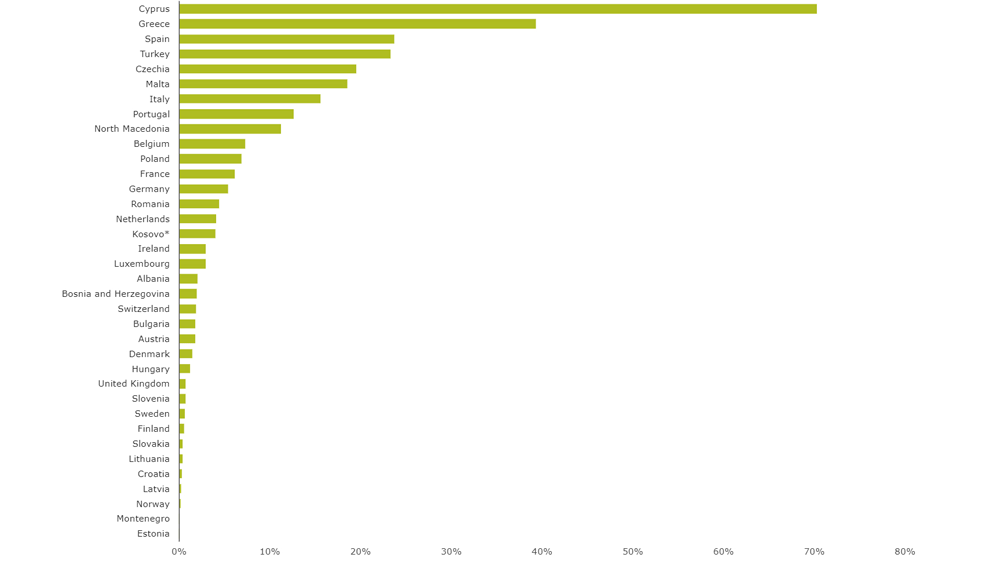
Drinking water in the future
Global warming, along with the growth of the world’s population are two factors that intensify the extreme conditions in which water can be found.
The shortage of drinking water in some areas – the demand for drinking water in a certain geographical area relative to the drinking water reserve of that area – is an alarming situation not only for the affected area but for the whole globe.
In order to be able to provide the necessary food and to support the growing population of the Earth, the global economy must continue to grow.
Water is a crucial resource for the global economy, but it can also be a limiting factor for development. In this respect, some investors take into account the existing water resources in the areas of interest before making the final decision.
There are no exact forecasts as to what the world’s water resources will look like, but all the forecasts that are being made take into account the phenomenon of global warming and the socio-economic development of the planet.
In any case, no one will be spared of the consequences of diminishing the planet’s water resources – alteration and degradation of the ecosystem, economic pressure and, last but not least, political conflicts of interest.


